Corn production in the US
In 2016, the USDA estimates 94.1 million acres of corn was planted in the United States. With an average planting population of about 34,000 kernels per acre, that means farmers planted almost 3.2 trillion corn seeds this year! But where do all those seeds come from? This Texan spent three weeks in the heat of a Midwest summer finding out!
Farmers have diverse needs in their fields, so seed companies like mine provide hundreds of different kinds for them to choose from. (DeKalb’s seed catalog alone lists over 200 varieties.) Unlike with soybeans, the vast majority of corn planted in the US is hybrid. To produce these hybrids, seed companies must cross-pollinate two different inbred lines together. In order to meet famer demand, this crossing must be done on a very large scale. In fact, the Monsanto corn production site I worked with this summer managed over 13,000 acres alone.
The birds & the bees
Before I get into how we go about breeding two different inbred lines of corn together, we need to have a little talk about the birds and the bees of corn reproduction…
Like most plants, corn plants have both male and female reproductive parts. The male reproductive flower is called the tassel. Along the branches of the tassel are florets that contain 3-4 anthers each. The anthers are what produce the pollen that will fertilize a female flower.
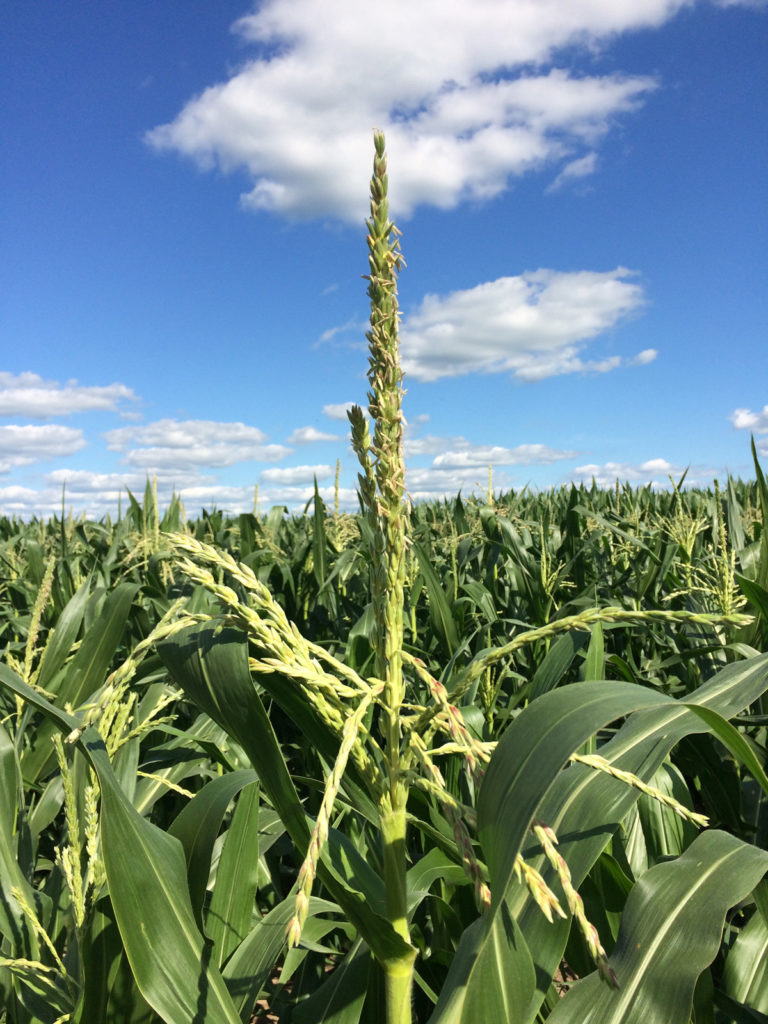
Tassel, male reproductive flower
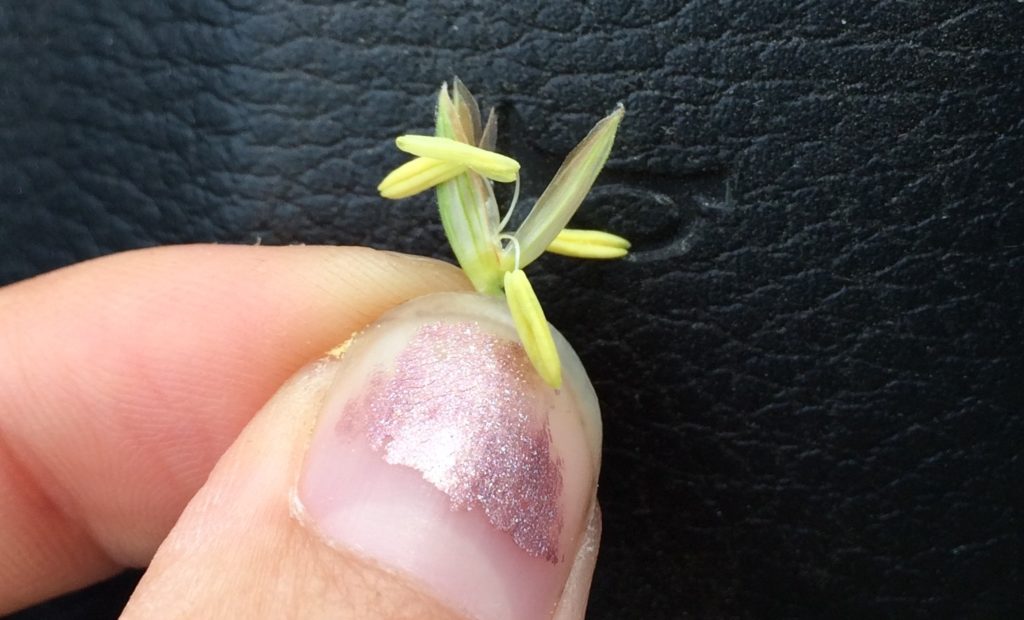
Floret and anthers from corn tassel
The ear is the female flower of a corn plant and what appears to be kernels in the picture below are actually ovaries! One silk is attached to the surface of each ovary and they function to capture pollen that falls from the male flower. The pollen will travel down the silk and fertilize each ovule individually. (I bet you didn’t know that’s what those annoying strings that get stuck in your teeth while eating sweet corn were for.)
Once fertilized, the ovules become corn kernels that contain genetics from both the original female flower and the plant that contributed the pollen. It’s possible for each kernel on the same ear to contain different genetics!
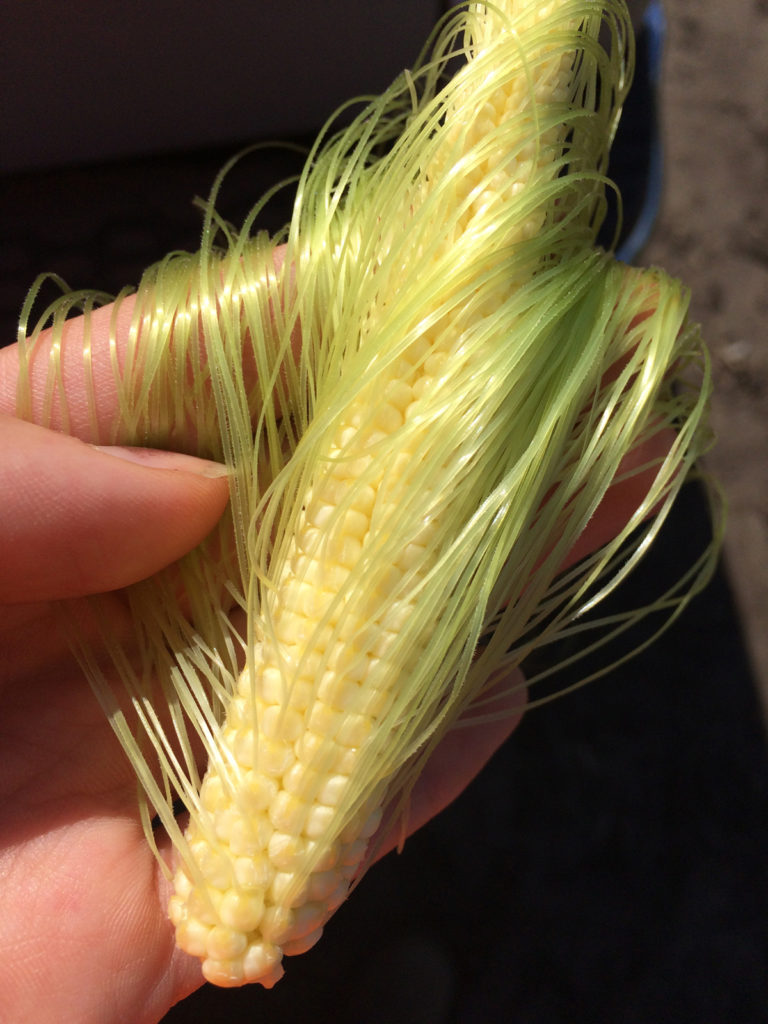
Ear with silk, female reproductive flower
A more in-depth description of corn pollination and fertilization can be found here.
Male & female rows
Somewhere up the pipeline, our breeders/researchers perform and study hundreds of different crosses to determine which combination of inbreds will produce the most desirable hybrids. Once these combinations are chosen, our commercial corn production facilities receive planting instructions for each cross. One inbred is designated the “male” while the other is designated the “female.” These inbreds are planted in the same field, typically in alternating blocks of four female rows and one male row.
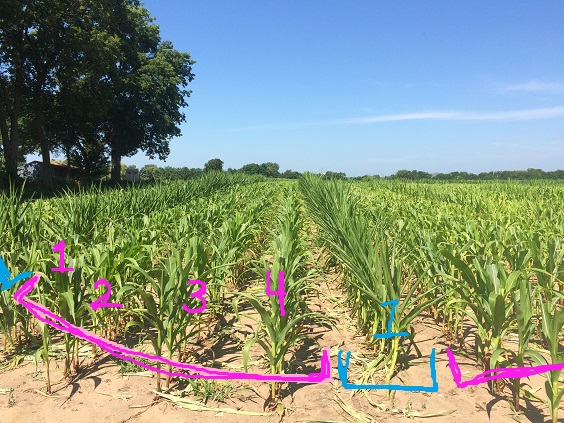
Four female rows and one male row alternating across the field
Confession time. When this was first descried to me, I thought it meant they had to somehow sex the seeds before planting them (I was an Animal Science major, ok!?) However, as we just learned above, corn plants are both male and female! The goal is for only pollen from the male rows to pollinate the ears in the female rows.
Now you might be thinking to yourself, well that’s all really interesting, but how can you breed two different inbreds together on such a large scale and still ensure pollen from the right tassels is fertilizing the right ears? How do we prevent 13,000 acres worth of “female” plants from throwing their own pollen and self pollinating?
Well, we basically let the male plants keep their male parts (the tassel) and remove them from the females.
Detasseling
Before the female rows begin pollinating, large machines make several passes through the fields to cut and pull as many of the female tassels as possible. This process leaves the male tassels untouched while eliminating the undesired female tassel.
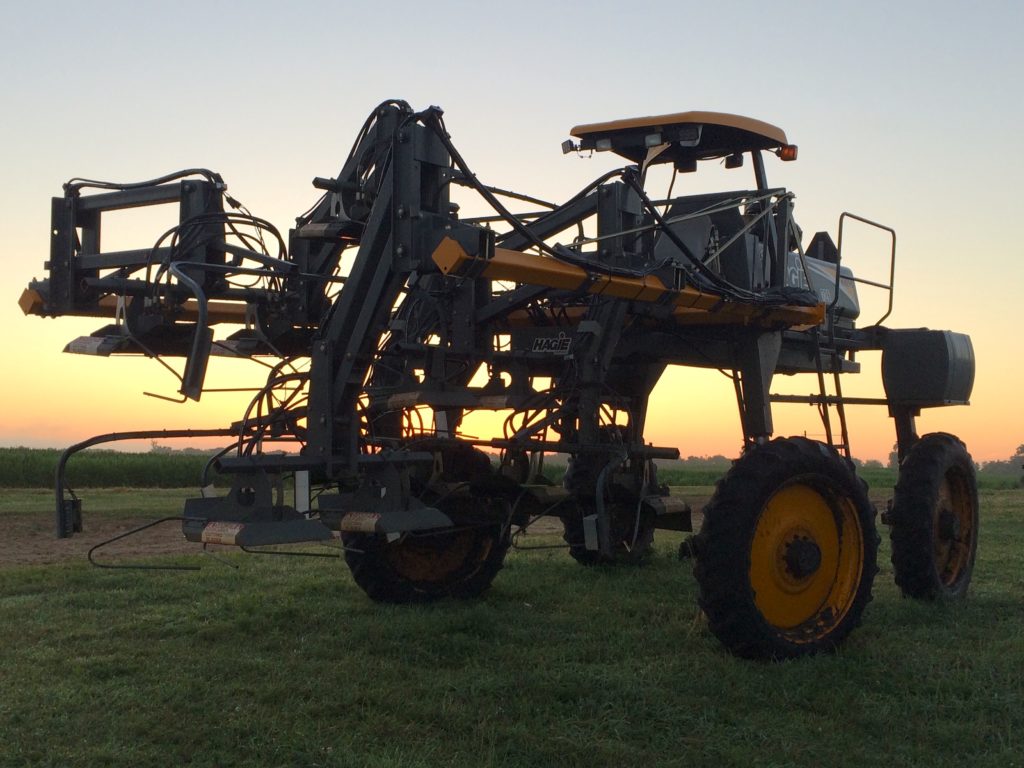
One of the Hagie cutters used to cut female tassels
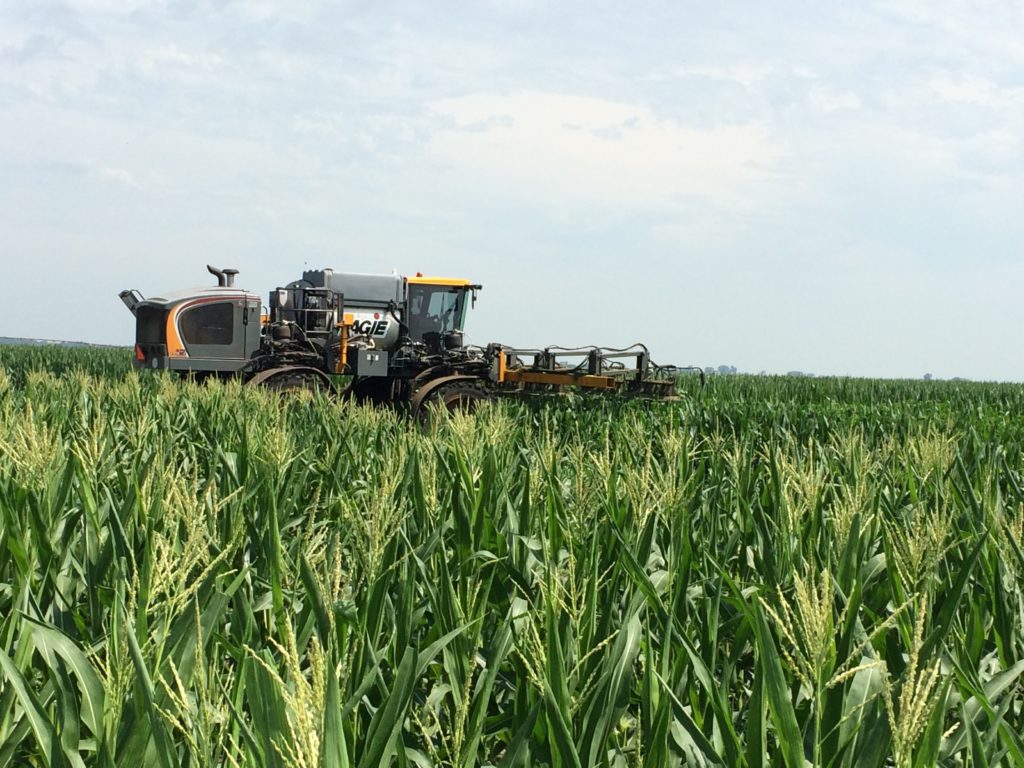
Hagie cutter about to start down some female rows
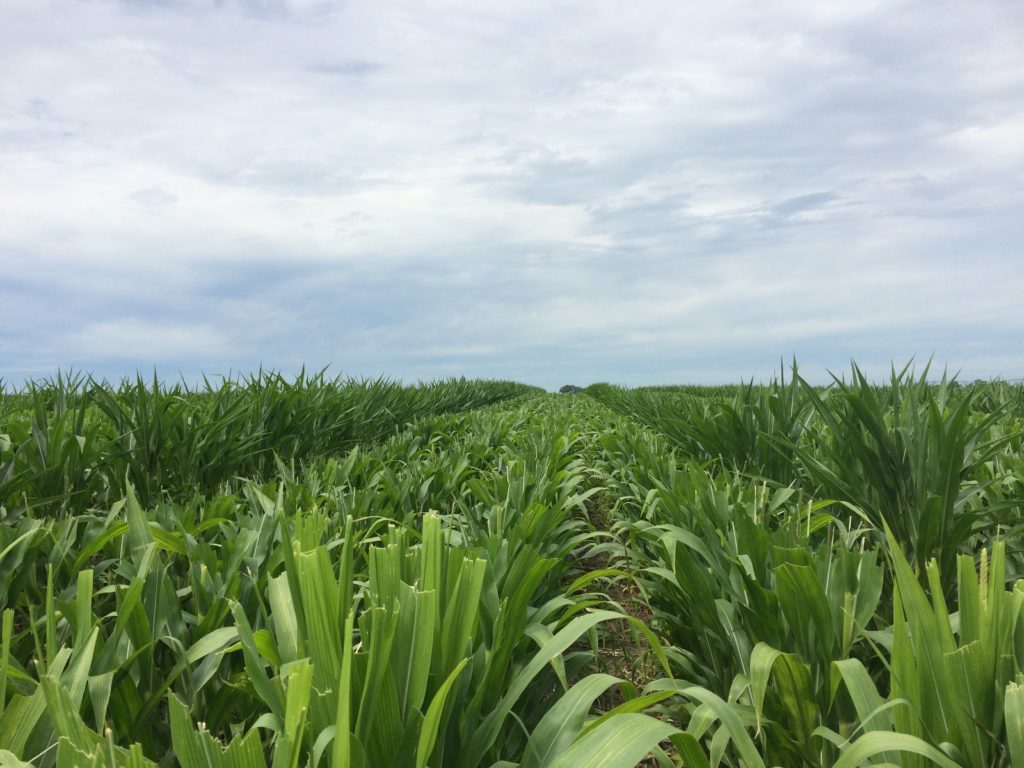
Female rows after cutting
However, even after all of those mechanical passes, 10-15% of female tassels will still be missed and have the potential to pollinate. If this were to happen because we left those remaining tassels, the purity of our end product would be compromised and a portion of the seeds wouldn’t yield the intended traits.
This is where a staple Midwest job comes in for many school-aged kids. For about three weeks each summer, thousands of kids across the Midwest walk every row of female plants and pull any tassels that remain. An example of what I mean by “pulling” a tassel can be seen in this video:
As they are walking the rows, they are looking for “spikes” or tassels that have begun to grow up passed the cut line from the machines.
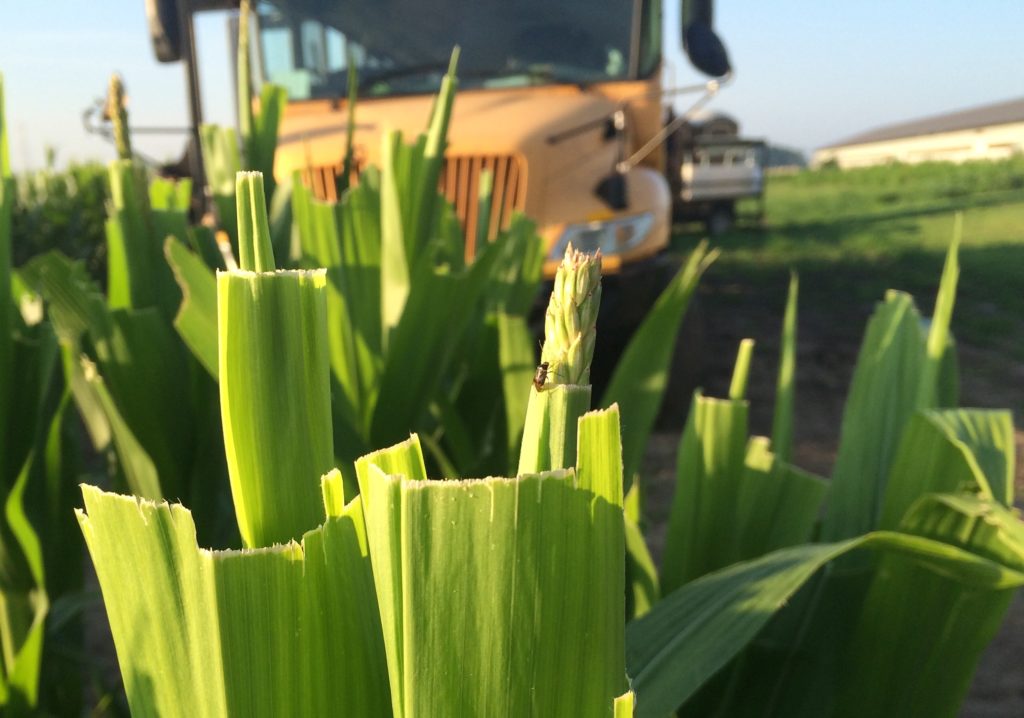
Spike
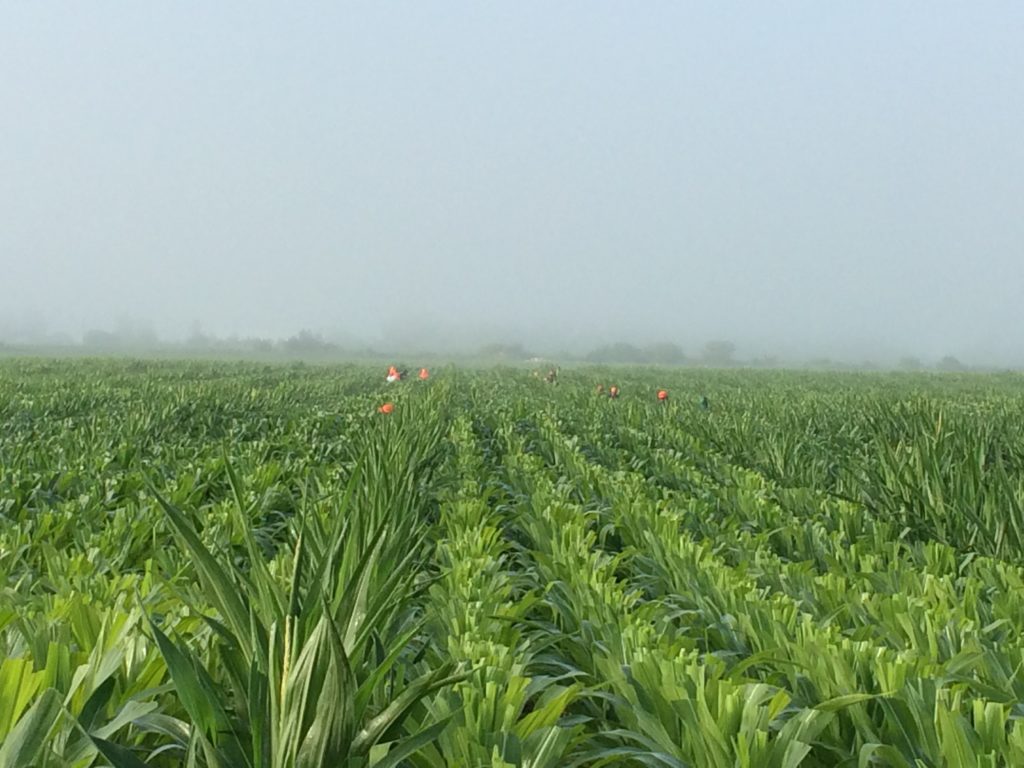
Into the corn: people hand-pulling remaining tassels
Field inspectors will also come out to make multiple observations and counts throughout the season to determine if enough tassels have been removed to fall within standards set for purity. At this point, less that 1% of tassels should remain.
All of the work that goes into detasseling is still mind-boggling to me. The preparation, organization, and timing has to be just right or else an entire field could be lost. I realize now that successful detasseling of the female rows is essential to ensuring we produce the hybrid we intended.
Eliminating the males
Once the detasseling season has ended, the male rows are eliminated since they have completed their male-y duties of pollination. This ensures ears on the male plant (which have presumably been fertilized by pollen from the male tassels) are not harvested. Remember, we only want the kernels produced from the females which have been successfully fertilized by the male’s pollen.
In the picture below, you can distinctly see blocks of four rows and a gap where the male row once stood. Males are also often planted around the seed corn field as a barrier to block pollen from neighboring corn fields. This also increases the amount of desired male pollen in the area. You can see the males in front of the females rows have been mowed/flattened as well.
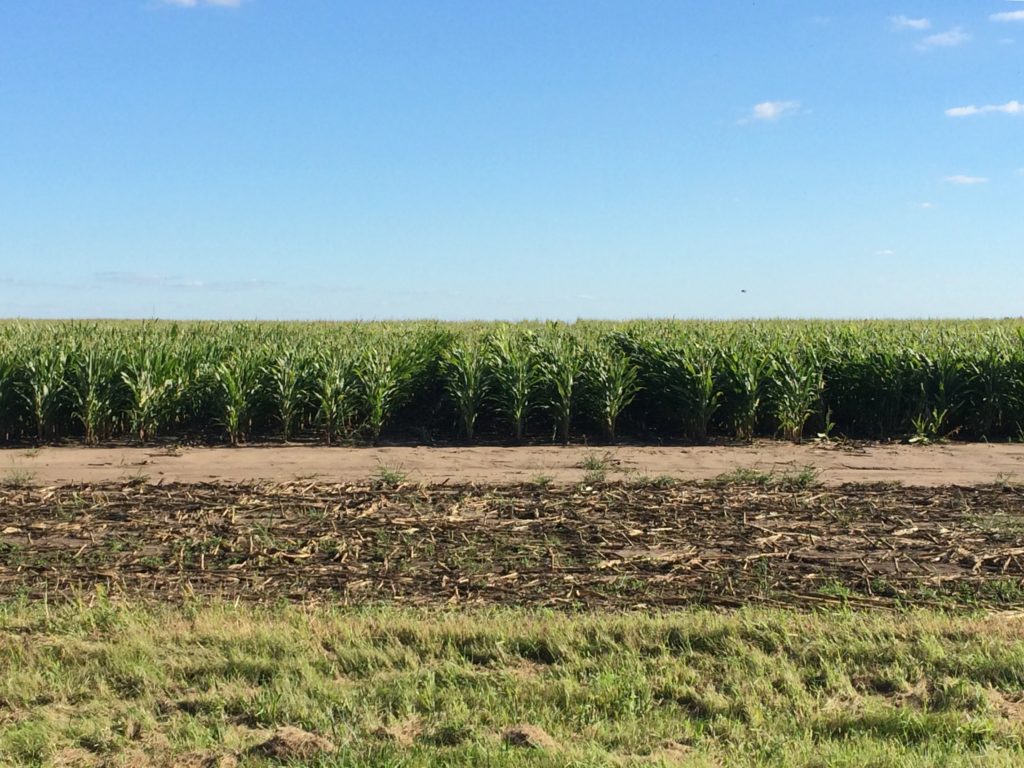
Males in the rows and barrier have been flattened
Now you know!
Everything described above is very high level and was learned in a whirlwind of eighteen days. If you see something that doesn’t look right or needs more clarification, please let me know in the comments! My goal is to keep learning and in the process I hope you learn something too.
ETA 9/9/16: Below is a great example of what poor fertilization looks like! This ear is from an outside row on a small plot, so it’s likely there simply wasn’t enough pollen. Pretty cool!
Here is a less extreme example:
To learn about how inbred corn lines are produced, read my post here!

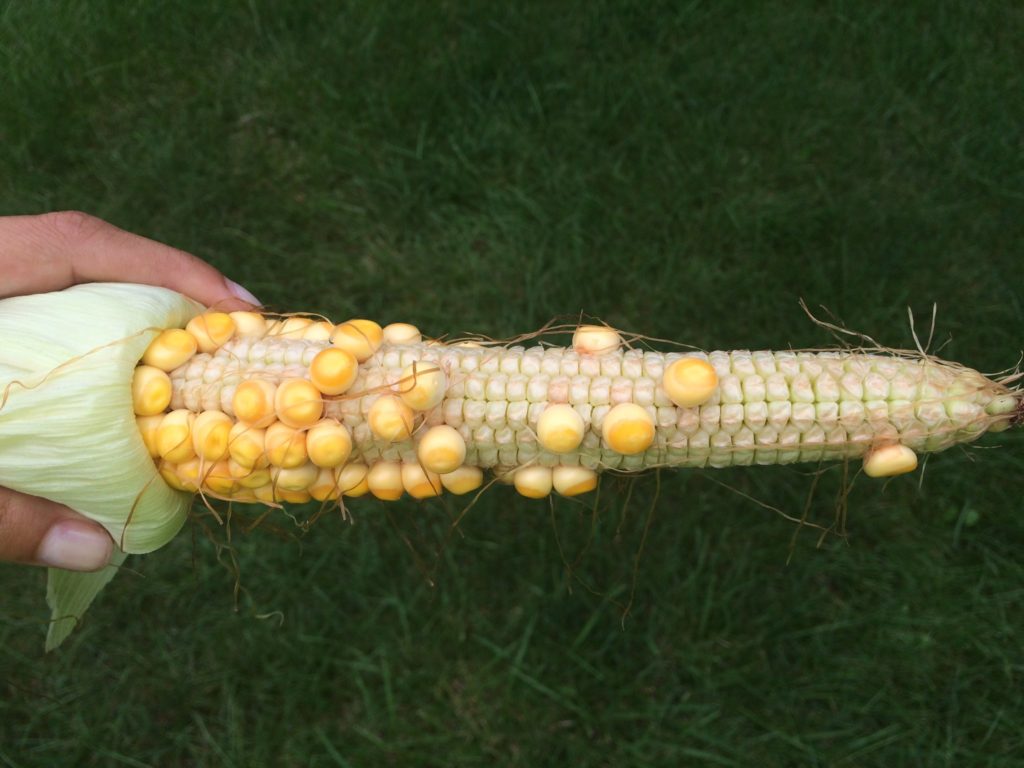
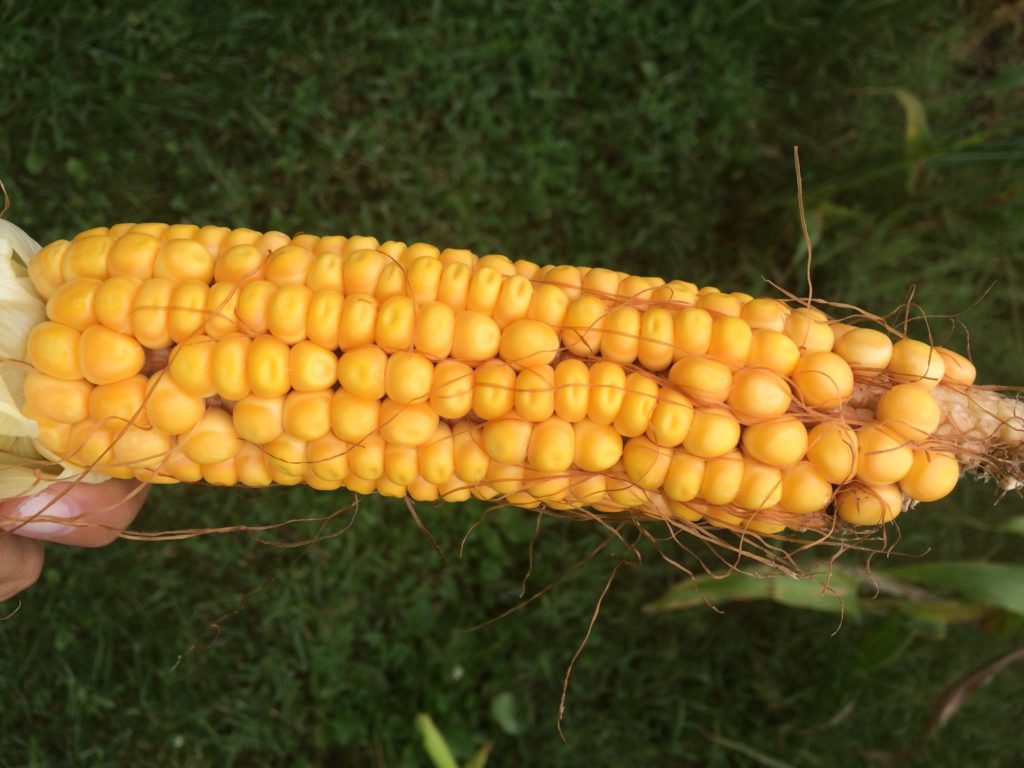
August 24, 2016 at 6:06 PM
Great job Hannah!
August 25, 2016 at 10:33 PM
Wow, Hannah! I had no idea. One of your best posts ever! Makes me wish I’d been a farmer instead of sitting in a cubicle my whole life…
September 6, 2017 at 1:28 PM
Very interesting and so well illustrated and described Hannah.
September 6, 2017 at 10:15 PM
This is a great article explaining the hybrid process! I had no idea and I sell corn! Good job!
December 29, 2017 at 3:11 AM
Hi there, great explanation. I may use some a few lines in an short article on hybrid maize seed production simulation. how can I cite this?
October 19, 2018 at 9:15 PM
Wow Hannah. I just followed the link from Tractor Time With Tim on youtube. You really explained and illustrated this clearly. Thank you so much for educating this senior citizen.
December 3, 2018 at 9:17 AM
i loved this video was my favorite part
December 26, 2019 at 10:12 AM
It’s crazy that people will do hundreds of different hybrids to find out which is the best and we get to enjoy them! I also had no idea that there were such things as female and male rows of corn! How do you tell the difference?
December 26, 2019 at 12:19 PM
Hi Tori! Yes, I was very surprised to learn that too! There really isn’t a difference between male and female inbreds except for the characteristics that are selected for. For example, we would want males that produce LOTS of pollen while females should produce good ears. There is probably some deeper genetics as far as which one you’d want certain traits to be present on, but that’s way over my head
January 18, 2020 at 4:20 PM
I detasseled corn in 1949 before machines were used to cut the tassels. It was a hot job in the Iowa summer.
June 3, 2020 at 11:44 AM
This article is extremely helpful to me since I am interning at seed corn production plant this summer. Thank you Hannah!!